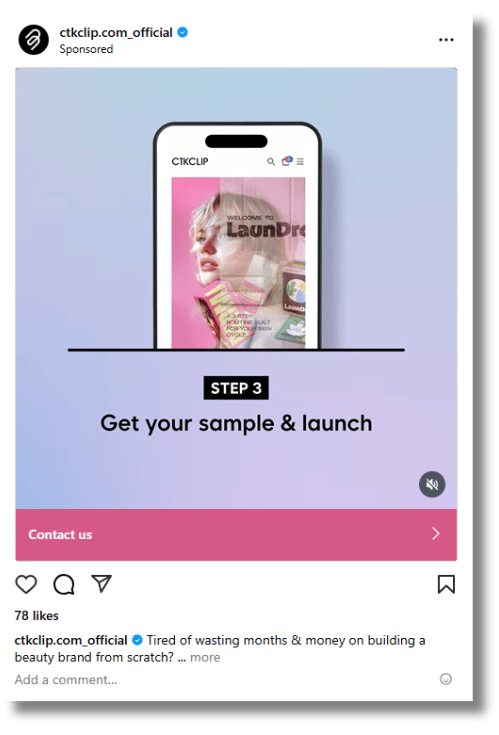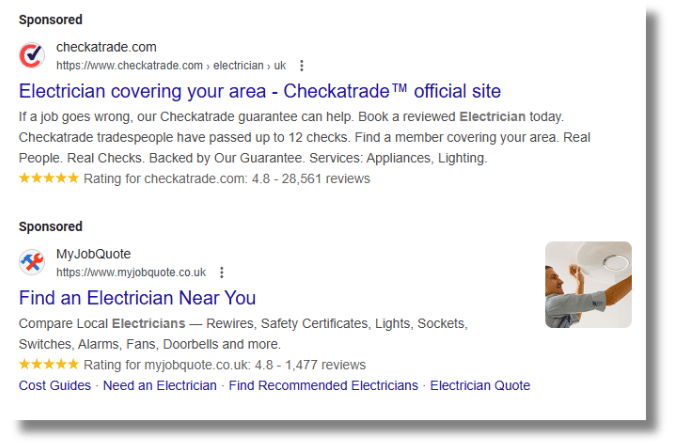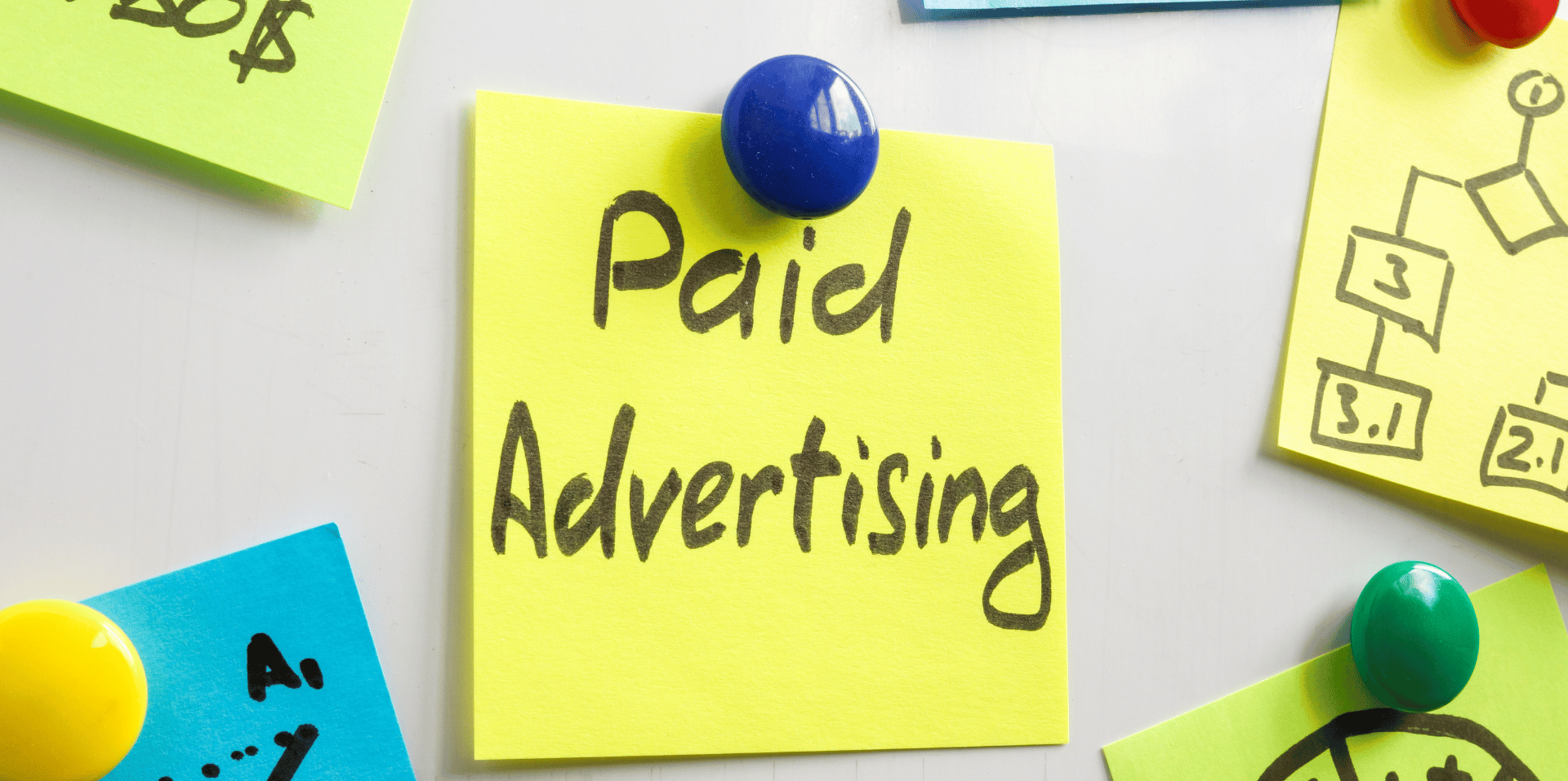In digital marketing, businesses often weigh the benefits of paid social versus paid search when planning their ad spend. Both involve paid advertisements, but they serve different purposes and business goals.
When making that investment, it comes down to user intent, ad placement, and where your audience is in the marketing funnel:
- Paid social media places ads in social media feeds, helping you increase brand awareness and reach new target customers.
- Paid search targets individuals actively searching for products or services on search engines, making it particularly effective for driving conversions.
In this guide, we’ll explore what each involves, the benefits, when to use them, and how they can work together to achieve your business objectives.
Ready to strengthen your digital marketing strategy with expert-led paid social media marketing and PPC marketing? Book a free 30-minute consultation with britweb using our booking form or call 01403 261491.
What is paid social?
Paid social is a type of digital advertising where businesses pay to promote content on social media platforms like Facebook, Instagram, LinkedIn, and Twitter/X. Unlike paid search, which relies on users actively searching for a product or service, paid social ads are designed to capture attention within a user’s social media feed, even when they’re not looking for anything in particular.
These ads are shown to highly targeted audiences based on detailed user data such as demographics, interests, and online behaviours, making it an ideal tool for introducing your brand to new and relevant users.
To better understand how paid social works, let’s break down its core features and benefits.

Example Instagram ad
Key features of paid social
Paid social advertising offers a wide range of tools and placements to help brands connect with users:
- Ad placement: Your ads appear in natural browsing locations, such as feeds, stories, and discovery sections, blending in with organic content.
- Ad formats: A variety of visual formats are available, including video ads, carousel posts, interactive stories, and image ads designed to drive engagement.
- Audience targeting: Platforms offer powerful targeting options based on interests, online behaviour, location, age, and even job titles.
Benefits of paid social advertising
When used effectively, paid social can be powerful top-of-funnel marketing for your digital strategy.
Some of the key benefits include:
- Boosting brand visibility and awareness among audiences who haven’t discovered you through organic search or owned media.
- Providing a scalable way to engage with niche or custom audiences.
- Enabling compelling, engaging ads that align with the user’s browsing experience.
- Helping build familiarity and trust before a user even visits your website.
In short, paid social allows brands to take a more proactive approach, introducing themselves to target consumers before they’ve started their buying journey. This makes it an essential channel for businesses looking to build long-term visibility and engagement.
What is paid search?
Paid search, a type of PPC (Pay-Per-Click) advertising, involves placing ads (primarily text-based) on search engine results pages (SERPs), using platforms like Google Ads and Microsoft Advertising. These ads appear when users enter relevant search queries, making it one of the most intent-driven forms of digital marketing.
Unlike Search Engine Optimisation (SEO), which focuses on earning visibility organically over time, paid search allows businesses to instantly appear in top positions on SERPs by bidding on keywords. As advertisers only pay when someone clicks their ad, it’s a performance-based approach that offers clearly measurable results.
While paid search uses a PPC (Pay-Per-Click) model, not all PPC ads are paid search. PPC simply means you pay when someone clicks your ad. This pricing model is also used for display ads, YouTube ads, and social media ads. What makes paid search unique is that these ads appear in search engine results, targeting people who are actively looking for something.

Example Google Search ad
Key features of paid search
To better understand how paid search ads work, here are the main elements:
- Ad placement: Ads appear at the top or bottom of search engine results pages, often above the organic search results, ensuring immediate visibility. These listings are marked as ads to distinguish them from unpaid (organic) results, maintaining transparency for users.
- Ad formats: While the standard is text-based ads, there are also options like shopping ads, call extensions, and site links to enhance the listing.
- Targeting: Based on keywords that match user searches and are aligned with strong user intent, ensuring you reach people who are actively seeking your solution.

Example of Google Shopping ads
Benefits of paid search advertising
Paid search is an ideal marketing channel for brands that want to appear when customers are ready to make a purchase. Here’s why it’s so valuable:
- Captures traffic from users who are actively searching for what you offer.
- Delivers high click-through rates (CTR) by matching intent with relevant ads.
- Complements your search engine optimisation (SEO) strategy by providing additional visibility alongside organic search traffic.
- Drives targeted website traffic and supports measurable, conversion-focused results.
As most search ads target users already in the decision-making stage of the marketing funnel, paid search is a great fit for inbound marketing campaigns.
Paid social vs paid search – key differences chart
| Factor | Paid Social | Paid Search |
|---|---|---|
| User Intent | Users not actively looking | Users search with intent |
| Ad Placement | Social media feeds | Search engine results pages |
| Ad Formats | Visual: video ads, images, carousels | Text-heavy: text-based ads, shopping ads |
| Audience Targeting | Interests, behaviours, demographics | Keywords, search queries |
| Goal | Increase brand awareness, engagement | Drive conversions and direct traffic |
| Platform | Social media platforms | Search engines like Google and Bing |
| Best For | Awareness, storytelling, retargeting | Leads, sales, immediate intent |
When to use paid social vs paid search
When to use paid social
Use paid social when your goal is to build awareness or introduce your brand to new audiences. It’s ideal for top-of-funnel marketing activities such as:
- Launching a new product
- Creating brand storytelling campaigns
- Targeting users based on interests and demographics
You can also re-engage users who have interacted with your social content, such as liking a post, watching a video, or clicking an ad, even if they haven’t visited your website.
When to use paid search
Paid search works best when users are already searching for something specific. It’s the perfect fit for bottom-of-funnel efforts where you want to:
- Drive conversions, enquiries, or sales
- Target high-intent search queries
- Promote service pages
- Increase visibility in competitive search engine results
Essentially, if your audience knows what they want and is actively looking for it, paid search helps ensure your business shows up at exactly the right moment.
When to use both together
Using these strategies together can significantly amplify your digital marketing performance. This dual approach supports the entire marketing funnel, from initial awareness to final conversion. For example, you can use paid social to generate interest, educate your audience, or introduce your brand to new audiences. Then, when users begin actively searching for more information or a solution, paid search can help ensure your business appears in front of them at that critical decision-making point.
This combined approach is especially effective for longer buying cycles, B2B campaigns, or industries where customers conduct extensive research before making a purchase.
How britweb can help
At britweb, we specialise in creating tailored digital marketing strategies. Whether you need high-converting search ads, creative social media ads, or both, our expert team can help you maximise your marketing budget.
We offer:
- Full social media audits
- Full PPC advertising audits
- Campaign management and optimisation
- Strategic planning
- Creative asset design
- Engaging ad copy
- Transparent reporting
Looking to boost your digital marketing with high-performing, results-driven ads? Contact us to start reaching your target audience more effectively.
Paid search vs paid social FAQs
What is the main difference between paid social and paid search?
The key difference comes down to user intent. Paid search reaches users who are actively searching for specific products, services, or solutions on search engines. By contrast, paid social targets users based on interests, demographics, and online behaviour while they browse social media platforms, even if they’re not currently looking for anything.
Which is better for e-commerce: paid search or paid social?
Paid search is often more effective for e-commerce businesses targeting shoppers who are ready to buy, particularly through shopping ads that display product images and pricing. On the other hand, paid social is ideal for generating interest, building a following, and retargeting users who may not convert right away but are influenced over time through engaging visual ads.
Can I use paid search and paid social together in a digital marketing strategy?
Yes, and it’s often the most effective approach. Using both channels together allows you to guide your audience through the entire marketing funnel, from brand discovery on social media to purchase via search ads. A combined strategy increases touchpoints, reinforces messaging, and helps improve ROI across your entire digital marketing campaign.
What is another name for paid search?
Paid Search is often referred to as PPC (Pay-Per-Click) advertising, especially on platforms like Google Ads. Other related terms include search engine marketing (SEM) and search ads, which all refer to paid placements on search engine results pages (SERPs).
Is SEO the same as paid search?
No – SEO (Search Engine Optimisation) and paid search are different approaches to appearing in search engine results. SEO focuses on improving your website’s visibility organically, without paying for placement, while paid search involves paying for ad space at the top or bottom of the results page. Both can work together to maximise your search visibility and drive more qualified traffic.


